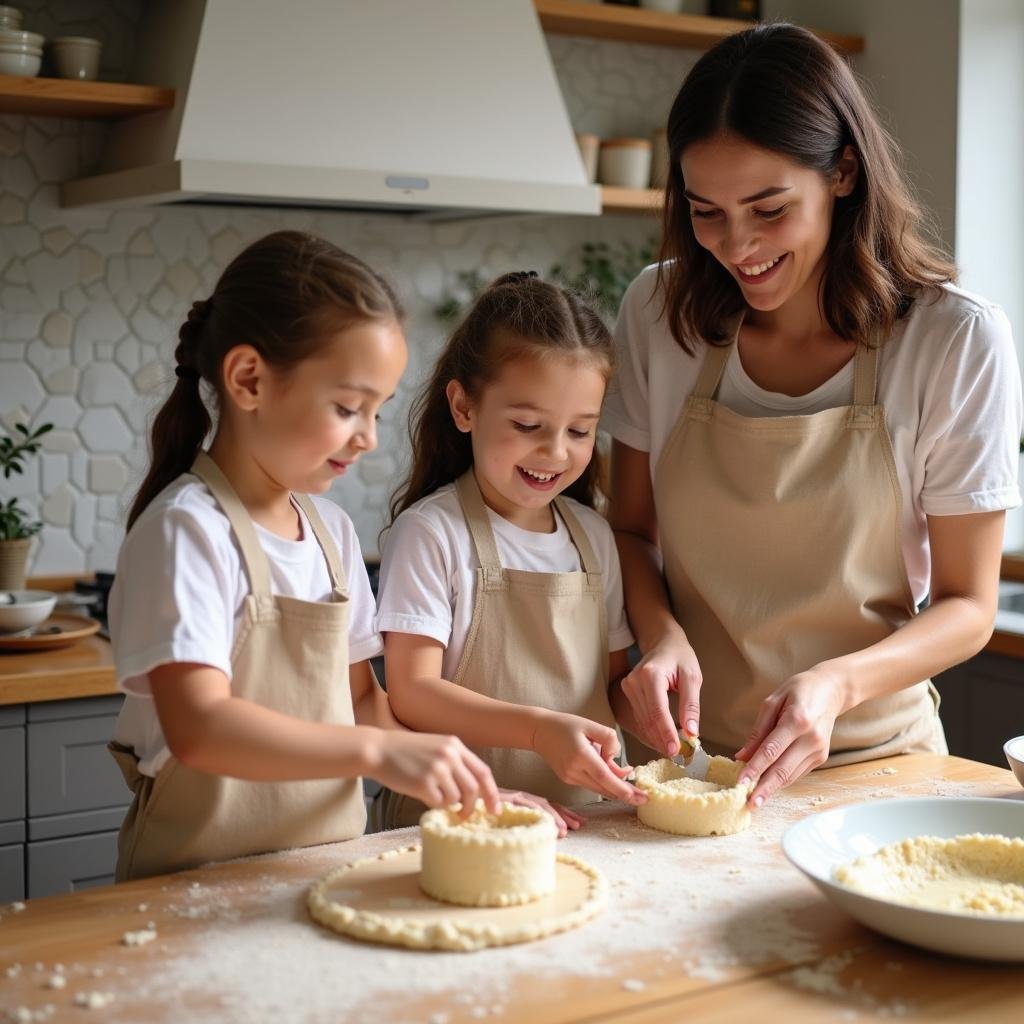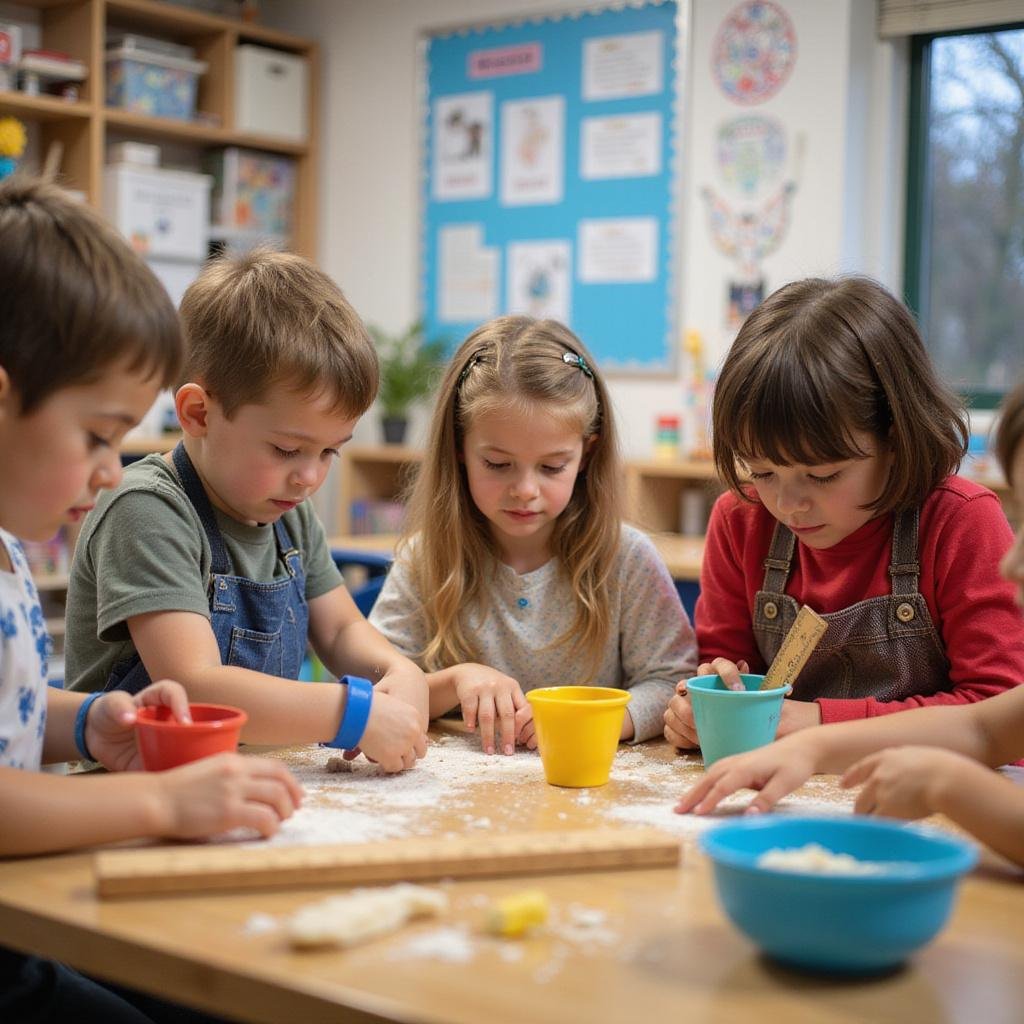1. Introduction
Teaching kids essential math skills can sometimes be a challenge, especially when trying to keep their attention engaged and make the learning process enjoyable. One highly effective and innovative approach is to incorporate cooking activities into their educational routine. By blending the hands-on art of preparing meals with core mathematical concepts, educators and parents can transform math lessons into fun, memorable experiences that children eagerly participate in. In this article, we will explore creative ways to teach kids math through cooking, turning the kitchen into a dynamic classroom that fosters both learning and development.
2. Why Use Cooking as a Method for Teaching Math?
Utilizing cooking as a teaching method offers numerous advantages for promoting children’s comprehension of vital math skills. Cooking provides tangible, real-world contexts to understand abstract concepts such as measurements, fractions, and ratios. This interactive approach not only enhances problem-solving abilities but also builds confidence in math. For example, incorporating popular kitchen gadgets like the Ninja SLUSHi with RapidChill Technology or a Fullstar Vegetable Chopper and Spiralizer can make measuring ingredients more fun. These tools serve as essential fundamentals for accurately executing recipes and understanding quantities in a practical setting.
Furthermore, when children follow recipe instructions—such as adjusting ingredient amounts or timing—they naturally develop a deeper appreciation for the relevance of math in daily life. Turning cooking into a collaborative activity can boost engagement and make learning both practical and enjoyable, especially when combined with other cooking essentials like a Ninja Air Fryer Pro 4-in-1.
3. Creative Cooking Activities to Teach Kids Math
Measuring and Proportions
One of the most fundamental math skills in the kitchen is accurate measurement. Using tools like measuring cups, spoons, and scales—perhaps complemented by a Ninja Blender—kids learn to quantify ingredients with precision. For instance, ask children to double a recipe or cut it in half, introducing practical applications of multiplication and division. This enhances their understanding of measurements, ratios, and proportions.

Using Fractions in Baking
Cooking is an excellent opportunity to introduce children to fractions. When recipes call for fractional measurements like 1/2 cup of milk or 3/4 teaspoon of salt, kids can visually grasp how fractions work in real-world scenarios. Practice activities such as converting improper fractions to mixed numbers or comparing fractions help deepen their understanding and prepare them for more complex math topics.
Scaling Recipes and Ratios
Encouraging children to modify recipes for different serving sizes can effectively teach ratios and proportional reasoning. For example, if a pancake recipe serves four but you need to make only two, ask how to halve the ingredients. Conversely, for larger groups, doubling the recipe emphasizes ratio scaling. Using kitchen tools like the Cuisinart Bread Maker or a Ninja Grill and Smoker can facilitate these activities while making the process more engaging.
Time Math in Cooking
Cooking times present perfect opportunities to teach children how to read clocks, estimate durations, and perform basic arithmetic involving time. Timing each step in a recipe with a stopwatch or clock helps develop skills in addition, subtraction, and estimation. Use kitchen timers or a Margarita Maker to add excitement and practical context to time calculations.
Volume and Capacity Activities
Exploring different container sizes helps children learn about volume and spatial awareness. Fill bowls, jars, and cups of varying sizes to compare measurements and develop an intuitive understanding of capacity. For a more interactive experience, consider using a Fullstar Vegetable Chopper or other kitchen gadgets to measure and compare ingredient quantities physically.
4. Tips for Successfully Combining Math and Cooking
- Supervise closely to ensure safety, especially when handling hot or sharp tools.
- Use visual aids such as measuring cups, conversion charts, and physical models of fractions.
- Encourage discussion about the math concepts involved after each activity to reinforce learning.
- Create fun challenges or collaborative tasks to maintain motivation and excitement in the learning process, using tools like the KitchenAid Stand Mixer.
5. Conclusion
Incorporating creative methods to teach kids math through cooking not only makes the learning process enjoyable but also highly effective. Turning the kitchen into an active learning environment fosters essential skills such as measurement, fractions, ratios, and time management. These methods are proven to boost children’s confidence in math and show them the practical importance of these skills in everyday life. Next time you cook with your kids, consider transforming it into an educational adventure—using culinary activities as a fun and tasty way to develop math proficiency.
6. FAQs: Teaching Kids Math through Cooking
How can I make cooking activities more educational for children?
Incorporate hands-on math concepts like measuring ingredients, adjusting recipe portions, and timing processes. Engage children with questions about the quantities and conversions involved, making the experience both fun and instructive. For example, you might introduce tools such as the Margarita, Slushie, and Drink Machine as part of the activity to enhance sensory engagement and understanding of proportions.
What safety tips should I follow when cooking with kids?
Always supervise children in the kitchen, keep hot surfaces and sharp objects out of reach, and teach proper safety procedures before beginning. Using safe gadgets like a KitchenAid Stand Mixer can also reduce risks while making cooking more accessible for young chefs.
Can cooking activities actually improve kids’ math skills?
Absolutely! Engaging children in cooking activities reinforces critical math concepts such as measurement, ratios, and fractions in practical settings. This hands-on approach helps develop a deeper understanding and boosts confidence in applying math skills in real life.
What age range benefits most from mathematical cooking activities?
This approach is suitable for children aged 4 and up. Younger kids can focus on simple measurements and counting, while older children can explore more complex concepts like ratios, conversions, and scaling recipes.
Why is integrating cooking into math lessons so effective?
Cooking provides meaningful, real-life experiences that help children see the relevance of math. It turns abstract concepts into tangible activities, increases engagement, and enhances retention of learning—making it a powerful educational tool.
For more inspiring cooking projects with kids, check out Edible Art Projects or explore Cooking Games in the Kitchen.


3 thoughts on “Creative Ways to Teach Kids Math with Cooking”